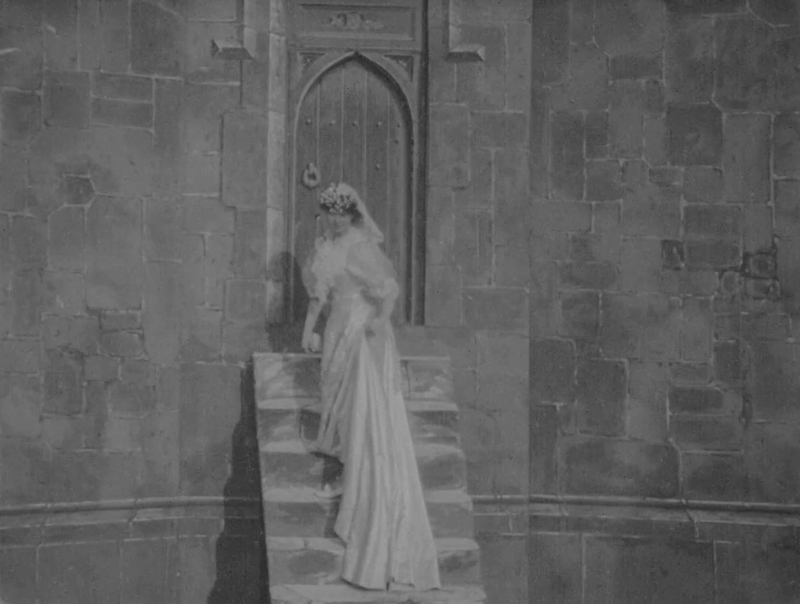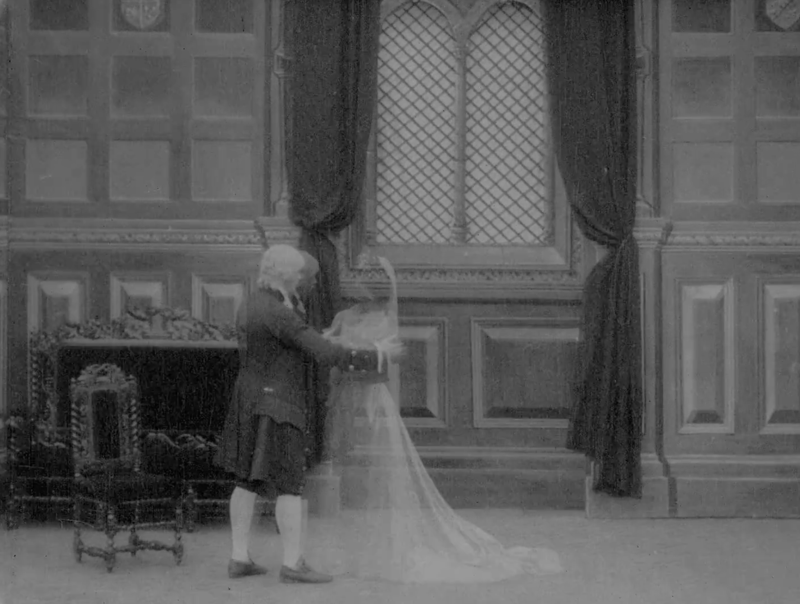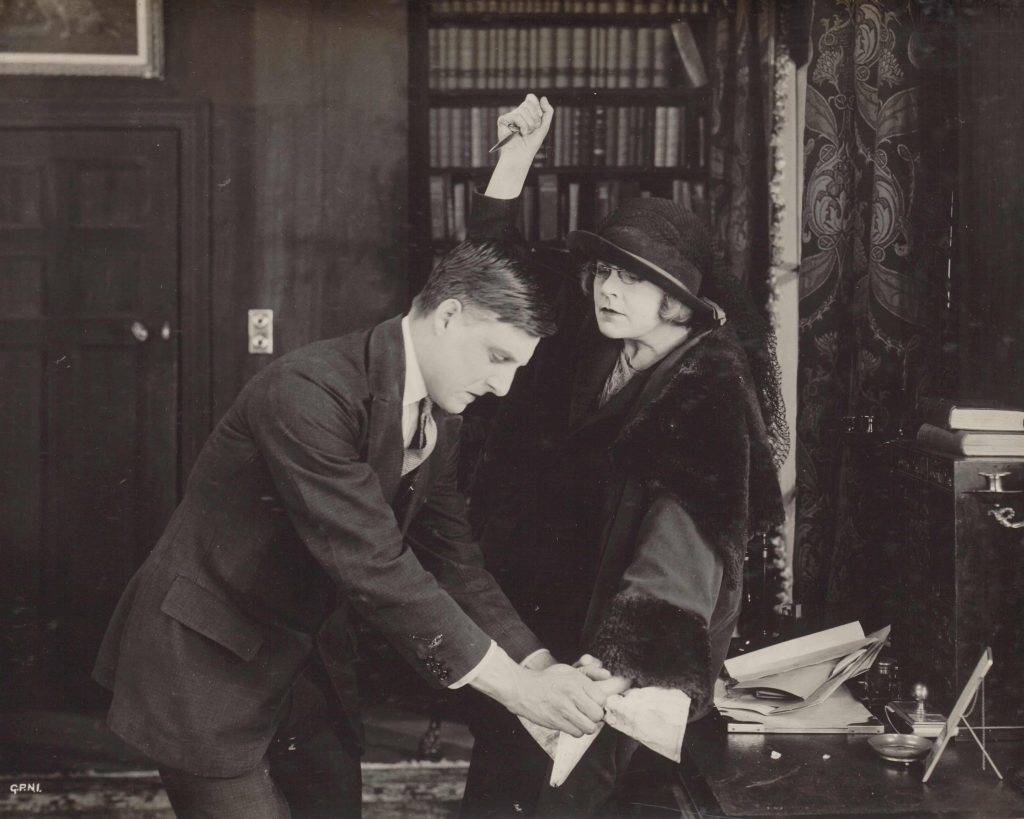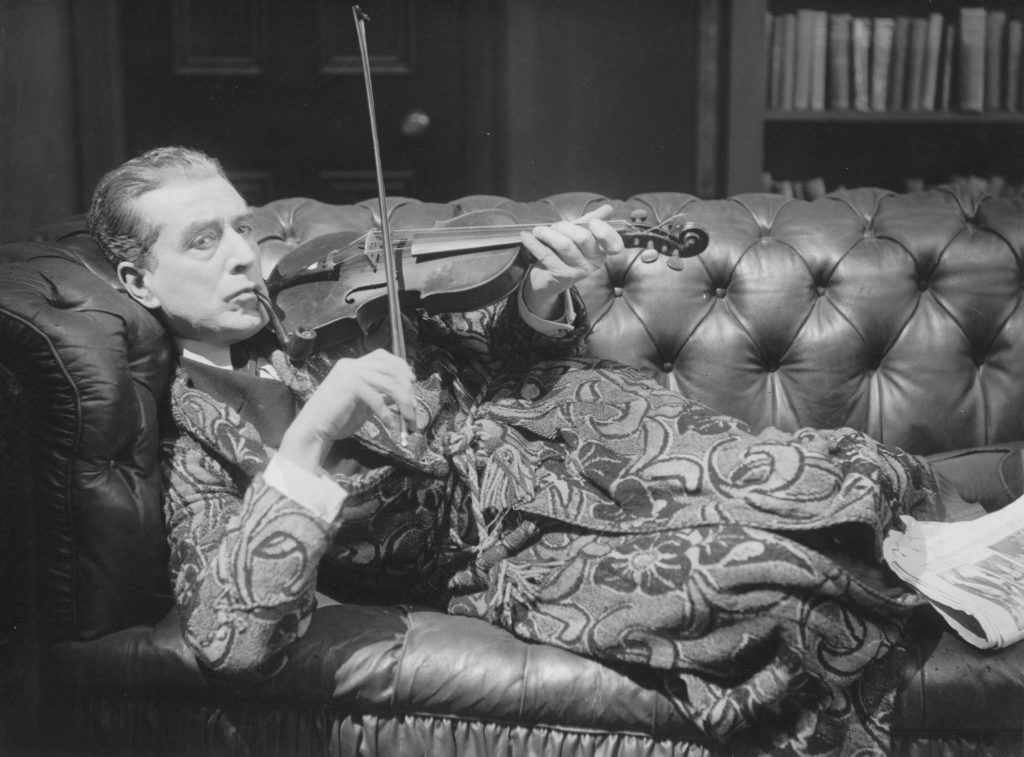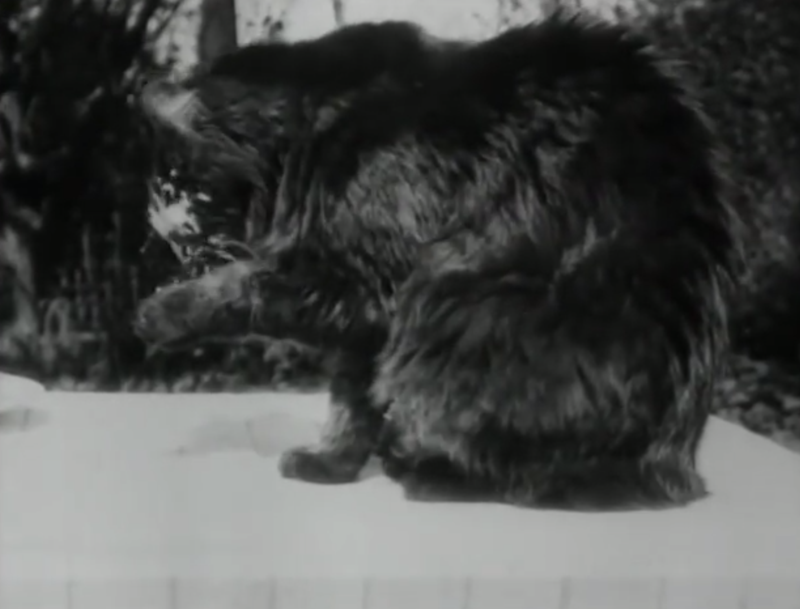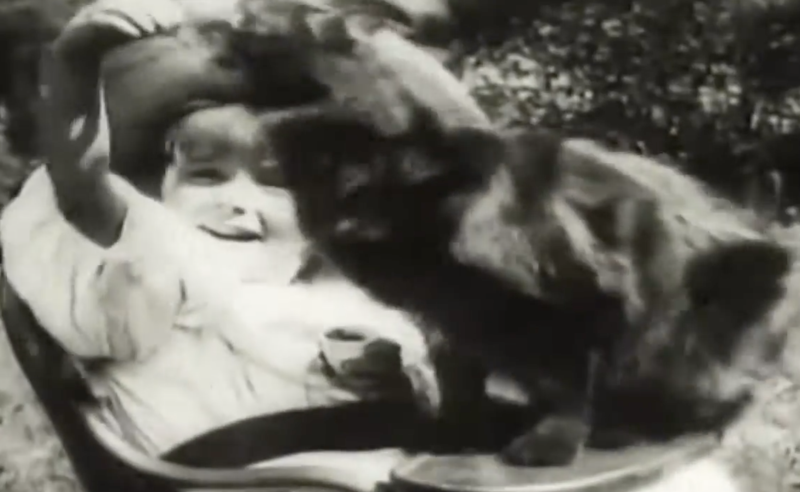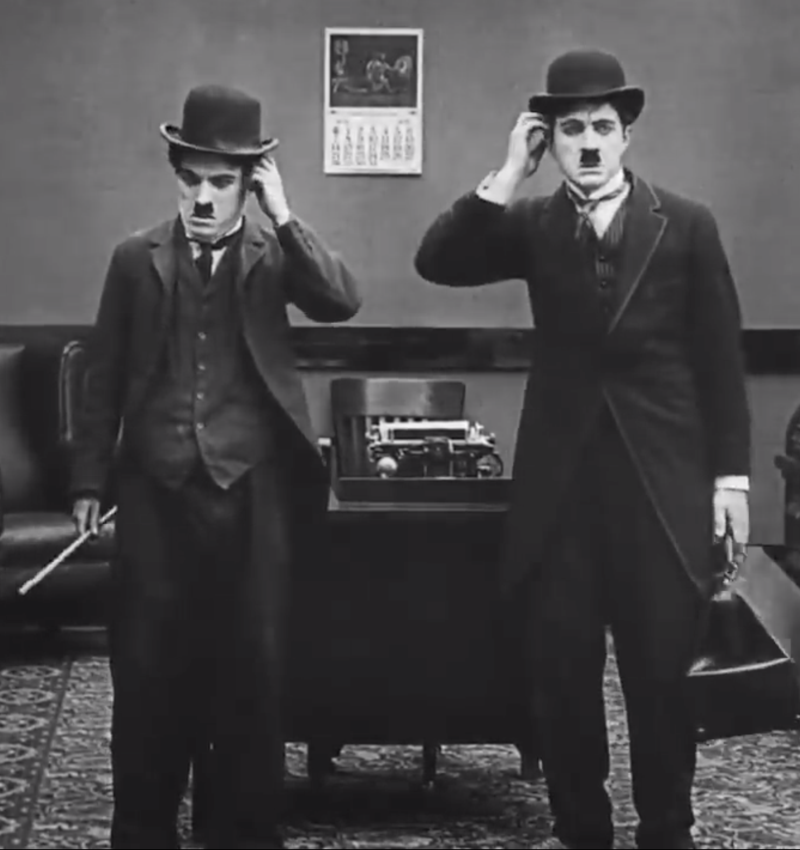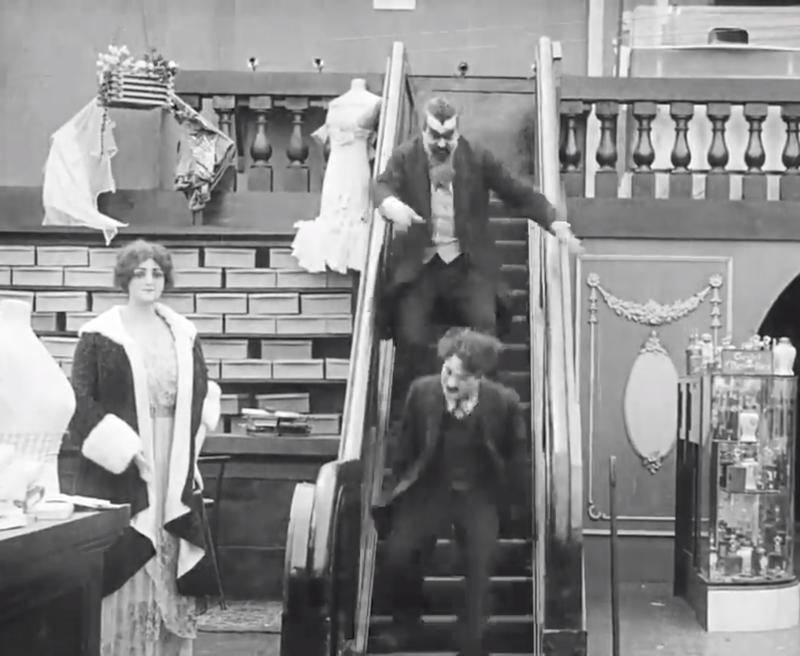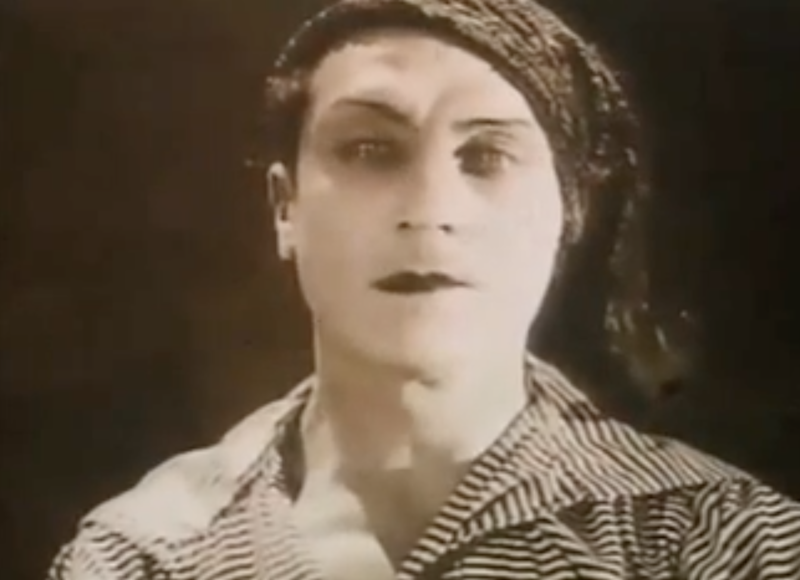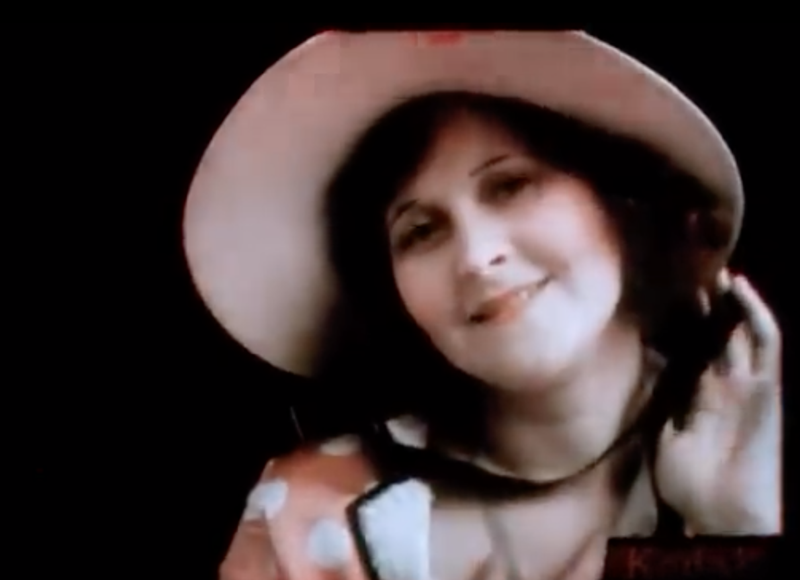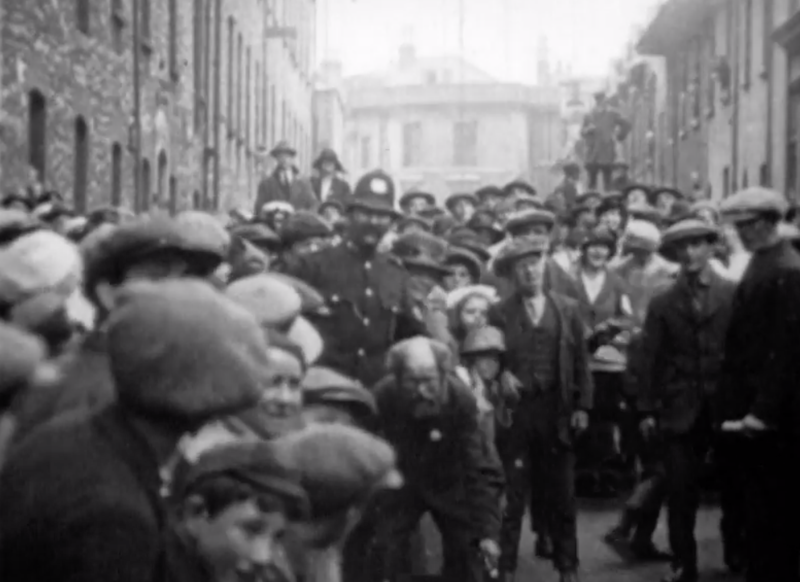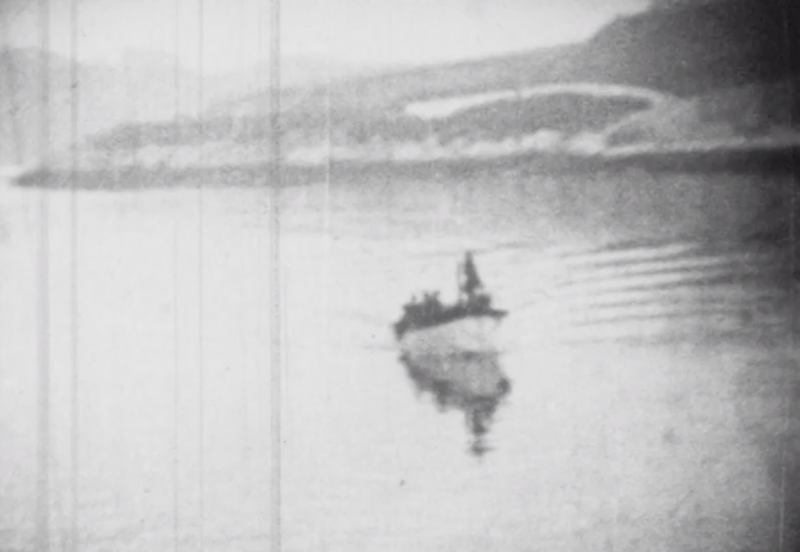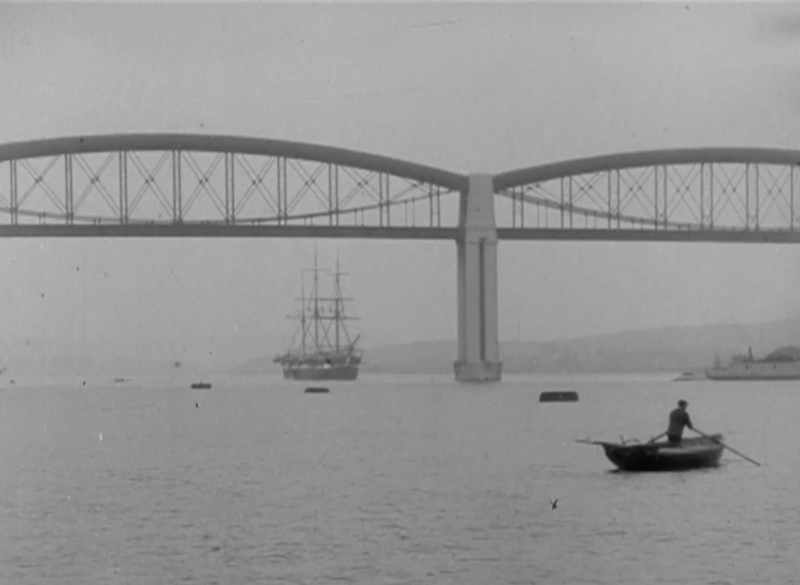Alice In Wonderland is a 1904 adaptation of Alice’s Adventures In Wonderland, directed by Cecil Hepworth and Percy Stow, and starring Cecil Hepwroth, Cecil Hepworth’s wife, and Cecil Hepworth’s cat (plus May Clark as Alice). The very first film version of Alice In Wonderland, at the time this was the longest film produced in Britain, but a third of the original film has been lost, unfortunately, so only about 8 minutes survive.
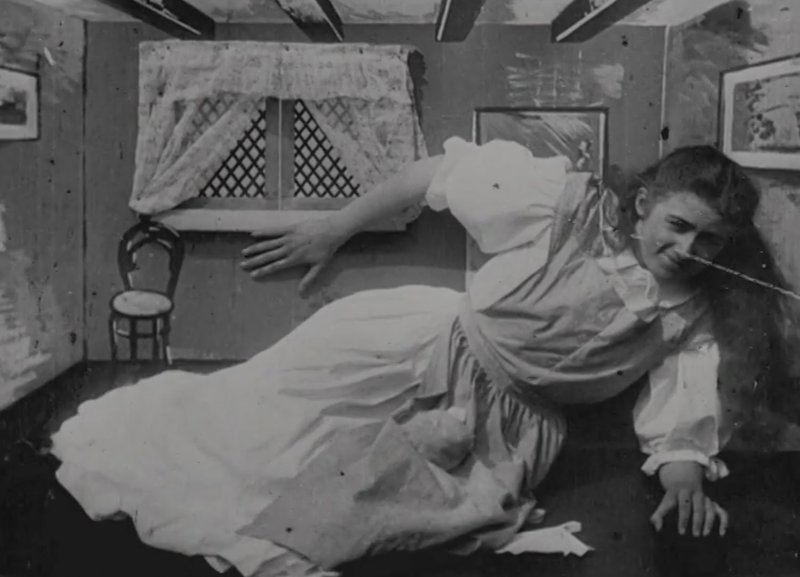
The very first film version of Alice In Wonderland, at the time this was the longest film produced in Britain, but a third of the original film has been lost, unfortunately, so only about 8 minutes survive (and unfortunately, there’s still quite a lot of damage and degradation to the remaining film). But they’re a pretty wonderful 8 minutes, luckily for us.
Even taking in to account the lost footage, this must have always been a fairly quick paced run through the book’s most iconic scenes. As with a lot of early film adaptations, the assumption was that the audience would already know the story it was based on, which is apparent here where a lot of it is intentionally framed to evoke John Tenniel’s original illustrations from the book (especially obvious in the shot above).
So this is like a greatest hits package of the book rather than a narrative adaptation, and we get a brisk run through the eat me/drink me sequence, the Mad Hatter’s tea party, the Red Queen, and so on. The highlight of the film, though, is the wonderful Cheshire Cat refusing to even entertain the idea of a smile.
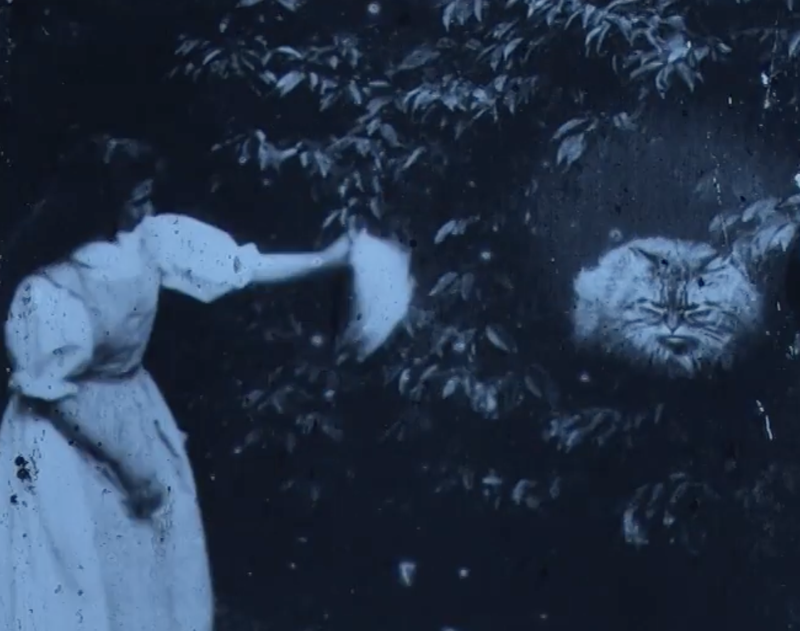
__________
Notes
1. I watched this on the BFI Player
2. It’s also on youtube
3. It’s nice to see that they’ve been getting the name wrong ever since the very first adaptation.
4. For another 100 year old Alice adaptation (in spirit rather than in fact), you should watch Elsie And The Brown Bunny
5. Also, not that this’ll be interesting really to anyone but me, my sister has a cat that looks very much like that magnificently grumpy Cheshire Cat
6. Which is nice
7. It’s kind of interesting how quickly the look of Alice became entrenched.
8. A testament to how great those original illustrations were.
9. The biggest deviation in over a 100 years probably being Jan Svankmajer giving her a pink dress instead of a blue or white one.
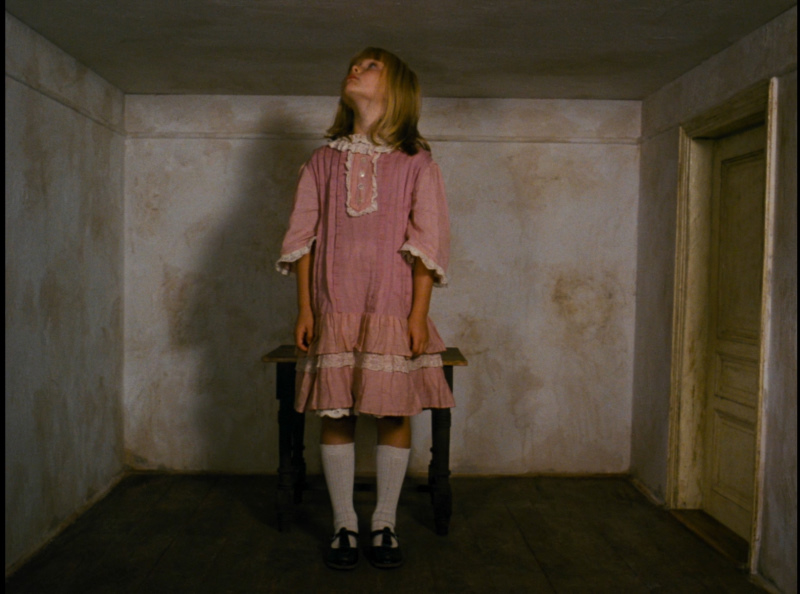
10. And that took until 1988.
__________
Film Information
Title: Alice In Wonderland
Director: Cecil Hepworth and Percy Stow
Year: 1903
Duration: 10 minutes
Further Reading: John Tenniel’s original Alice illustrations
